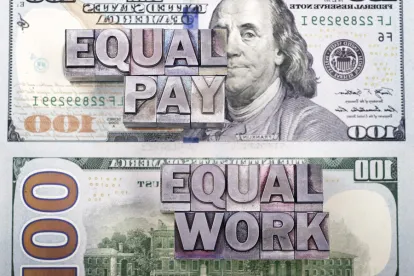As we reported previously, enforcement of equal pay laws and remedying of pay disparities continue to be top priorities for the U.S.Equal Employment Opportunity Commission (EEOC) and U.S. Office of Federal Contract Compliance Programs (OFCCP). The EEOC again highlighted this ongoing focus this past week when it announced revisions to its February 2016 proposal to collect pay and hours-worked data as part of the annual EEO-1 reporting process. In announcing the revised proposal, EEOC Chair Jenny Yang emphasized the agency’s view that pay discrimination remains a “persistent problem” for many workers and reiterated the government’s belief that “[c]ollecting pay data is a significant step forward in addressing discriminatory pay practices.” According to the Q&As accompanying the EEOC’s EEO-1 reporting changes, the EEOC and OFCCP will use the pay data collected via the annual EEO-1 reports to “focus agency investigations,” evaluate complaints regarding pay discrimination, and identify statistical pay disparities warranting further review.
To the likely chagrin of many, and despite having received numerous comments from employer advocates regarding the significant burden the new EEO-1 reporting requirements would impose, as well as the fact that the summary data collected is not likely to be helpful in actually identifying pay discrimination if and when it is occurring, the EEOC’s revised proposal is very similar to its original February 2016 proposal. Employers with 100 or more employees will still be required to report W-2 wages for 10 EEO-1 job classifications and according to 12 different pay bands. Additionally, employers will still be required to report on the number of hours worked by both exempt and nonexempt employees. Finally, the 10 EEO-1 job categories and the 12 proposed pay bands for reporting remain unchanged.
However, the EEOC’s revised proposal does change the EEO-1 filing deadline and the workforce snapshot period to be used for EEO-1 reporting. Instead of the current July through September snapshot period and September 30 deadline, the EEOC’s revised proposal changes the EEO-1 filing deadline to March 31 of each year and modifies the workforce snapshot period to a pay period between October 1 and December 31 of the reporting year. Employers will, therefore, be required to submit their current EEO-1 reports (without pay and hours data) for 2016 by September 30, 2016, and then will have until March 31, 2018, to submit their EEO-1 reports (with pay and hours data) for 2017. This change is designed to provide employers with additional time to prepare for the new reporting requirements and will enable employers to use year-end W-2 earnings (Box 1 of the W-2 form) for purposes of EEO-1 reporting. Additionally, the revised rule provides some clarification regarding the method of reporting hours of work for exempt employees.
The revised pay data collection proposal will be subject to a new 30-day comment period, which ends on August 15, 2016. The EEOC is planning to issue its final EEO-1 form revisions by September 30, 2016.
Given the EEOC’s and OFCCP’s continuing focus on pay disparities and the additional data they will soon have at their disposal, a review of current pay systems and a comprehensive pay equity analysis should be a top priority for employers. Any such review should be completed with the assistance of counsel (in order to invoke the protection of the attorney-client privilege) and should, at minimum, analyze whether there are gender, race, or ethnicity-based disparities in compensation. In order to determine fully whether such disparities exist, employers will need to review individualized employee data and should take into account factors that may explain differences in pay, including, but not limited to, job duties, location, education, prior experience, date of hire, time in job, performance, and other relevant factors. If disparities are identified that cannot be explained by legitimate, nondiscriminatory business factors, employers should work with counsel to eliminate any disparities going forward and should evaluate whether additional measures, such as modifications to policies or adjustments to individual pay, are warranted.



 />i
/>i

